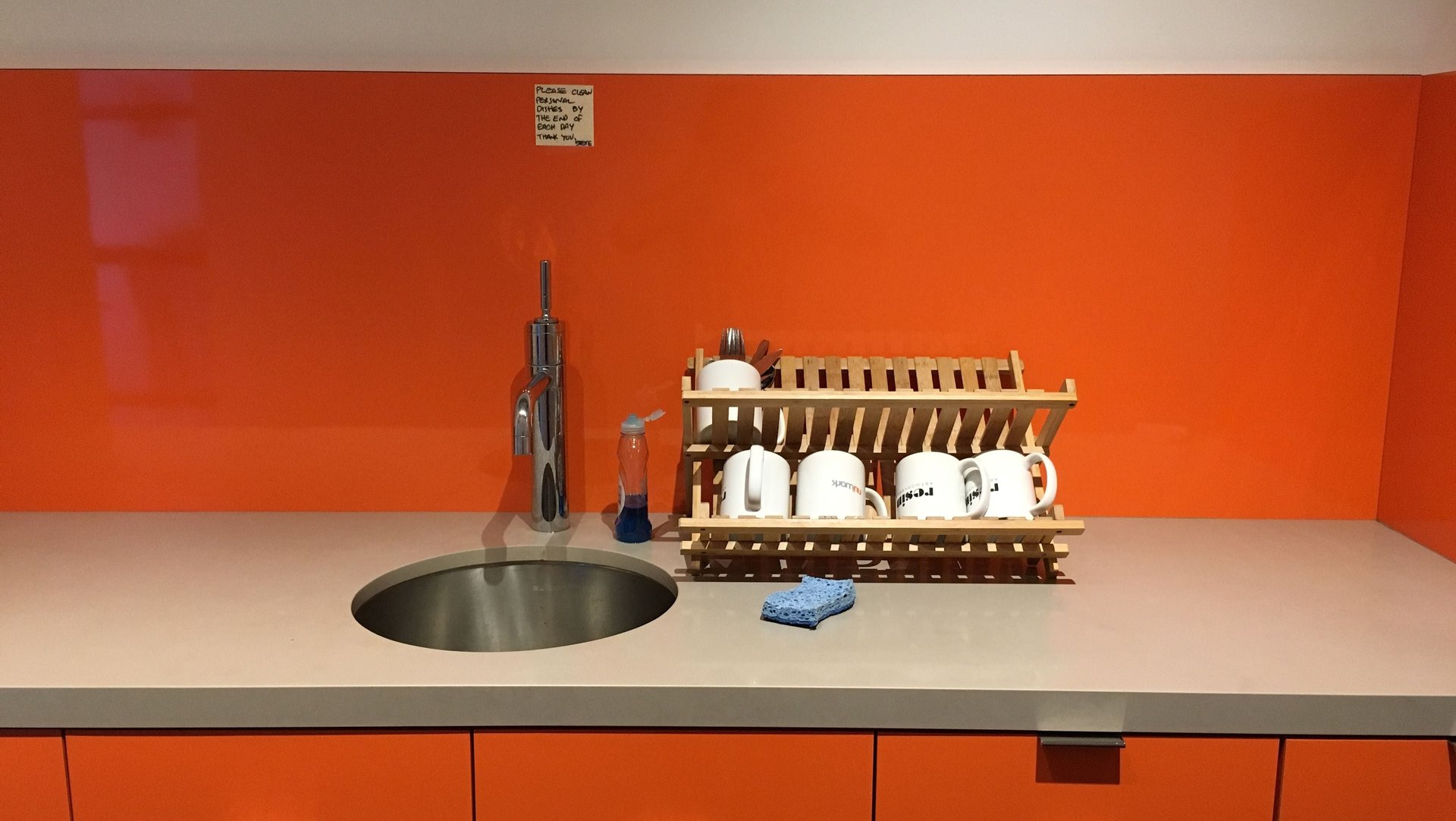Stop using the office mugs
I used to be a member of a coworking space in a strip mall next to a bowling alley. As coworking spaces go it was a pretty terrible one: buzzy fluorescent lights, long laminate tables peopled with scowling men on laptops, aggressively awful art.


I used to be a member of a coworking space in a strip mall next to a bowling alley. As coworking spaces go it was a pretty terrible one: buzzy fluorescent lights, long laminate tables peopled with scowling men on laptops, aggressively awful art.
Among this space’s unwelcoming features was a kitchenette equipped with coffee, powdered non-dairy creamer, and a fork. Not forks, plural—a single fork, for the communal use of the 24-hour clientele.
Yes, that’s gross. But how gross was it? As cold and flu season drags on, Quartz At Work examines the likelihood that shared mugs, cutlery, and plates in the office kitchenette will make you sick.
The flu
The chances of catching the flu virus from a communal kitchen item are small, though not impossible. Influenza virus, according to the US Centers for Disease Control, spreads primarily through drops of liquid passed from a sick person directly to the mouth or nose of a soon-to-be sick person. A coworker who coughs in your face poses a much greater threat to your health than one who uses and returns a communal mug without washing it (though both of these hypothetical people are terrible).
While you are far more likely to catch the flu through these airborne particles, picking it up from a contaminated object is still possible. On your hands, the flu virus loses its ability to infect in as little as five minutes; on a tissue, it lasts for 15 minutes. Harder surfaces like plastic, metal, or ceramic retain the virus longer, with lab tests finding that the virus loses its power to infect within nine to 24 hours after contact with such surfaces.
A fork used 20 minutes ago could theoretically still carry the virus; one used 24 hours ago almost certainly does not. It’s a powerful argument for owning more than one fork.
The cold
Colds are also caused by viruses, which have a fairly limited life outside of the body. But viral colds often come with opportunistic bacteria infections in the nose or throat—and illness-inducing bacteria are much more tenacious when it comes to communal surfaces.
The bacteria staphylococcus and C. difficile can both survive for weeks on hard surfaces, according to the UK National Health Service. Warm soap and water can neutralize surface bacteria, but the subpar cleaning tools in dishwasher-less office kitchens are a problem.
A small 1997 University of Arizona study of the mugs in one campus office found that bacterial counts on the cups was actually higher after they were wiped with the office dish towel than before. The smelly, constantly damp sponge found in many communal kitchens is a hotbed of bacteria; the chances your office sponge is being regularly, properly cleaned are slim. And even if adequate supplies are provided, communal mug hygiene is only assured if every colleague who uses one thoroughly cleans it upon return—and that is a big if.
“The coffee cup is at issue, especially if it has been used by someone else or subjected to poor cleaning practice,” says Peter Rose, a microbiologist and professor emeritus of biotechnology at South Africa’s Rhodes University. “Without a doubt, best to use and clean your own, especially in high cold season—and avoid communal mugs.”
Rose stresses that airborne transmission is far more likely for both colds and flu, and that regular hand washing and avoiding touching your hands to your face is the most effective defense an individual can mount against illness. But bringing your own mug and cutlery from home—provided that you’re doing a better washing job them than your colleagues do in the office—won’t hurt either.